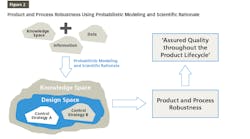The PAT (draft) Guidance was introduced in 2002, finalized in 2004, and is still largely ignored as an option by a huge number of pharma companies. Why? That is a simple question with a multi-faceted answer. [Spoiler alert: it is not just about spending money on equipment.]
Having said that, let’s look at the money involved. PAT will cost money and time and, as the old saw goes, “time is money.” Having the money and allocating it are two different matters. While the industry still makes huge profits, it also still uses antiquated accounting and payment practices. Add to that it also considers cross-training, instrumentation/short courses and conferences as “overhead” and not necessary for this quarter’s profit.
Also, largely still in place, is the “justification” of capital spending. At times it seems that company management is unable to differentiate between instruments for a specific product, general lab equipment and process monitoring instruments. There is still a residue of “which product are you buying that instrument for?” It seems to be an anathema that any instrument might be used for any product. For more than 40 years, I have been asked to justify any purchase in the narrowest terms, citing a single use. When it may not seem that that product will be a blockbuster, it doesn’t matter that the piece of technology you ordered could also be used for dozens of other projects; you still don’t get it approved.
The mix of non-training and lack of non-specific funding undercuts that older R&D-intense paradigm that led to many analytical breakthroughs, not the least of which is the current intense use of chromatographic applications at every stage of the industry. There is rarely the “wiggle-room” in the “leaner, meaner” approach to the way labs are run today. Did I mention that the management considers R&D an “overhead?” Any project that will not enhance this quarter’s profit margin is considered superfluous. This is the logical result of bonuses based on quarterly profits or, as I call them, the “What have you done for me lately?” approach to evaluating managers.
This state of affairs goes hand-in-glove with cost savings, since PAT (leading to QbD) costs time AND money. Despite the fact that these expenditures are returned many-fold by successful programs, it is almost never this quarter that returns are seen. Sadly, the parsimony doesn’t stop with hardware and training current personnel, it affects the ARD or QC directors’ ability to add headcount. Since the current staff in a typical pharma company is usually quite busy, adding a burden such as learning a new technology (i.e., NIR, Raman or TeraHertz) is just that: a burden. Learning a new field (successfully) on a part-time basis is generally a fool’s errand. Over the years, I have worked with companies where managers swore that the scientist I trained in NIR would be given time to practice and become competent in the technique.
One example was a major company in California. The woman I trained was a natural, picking up the concepts and software rapidly. I left for a period of several months to allow her to build a library of raw materials and generate calibrations, test them, and have them validated. I returned, and when I asked to begin some sample scans, her response was, “Let’s see if I remember how to turn on the instrument.” Upon some serious questioning, it turned out that, very soon after I departed the previous time, she was assigned a large number of “important” HPLC assays to run, not allowing much time at all for NIR.
This approach is ubiquitous throughout the industry, I fear. Any deviation or distraction from “grinding out the samples” is seen as non-productive work. When confronted, very, very few managers will admit that THEY were the reason for a project not being successful. The normal strawmen are 1) the technique (NIR, Raman, whatever) is not usable for our product; 2) the analyst wasn’t capable of doing the work or, my favorite, since I’m not there to defend myself; 3) the consultant gave us poor advice.
For all of the reasons stated above, that is why I believe PAT is so slowly being applied in pharma. Manufacturers need to start classifying PAT as a priority and NOT just part of their overhead.




